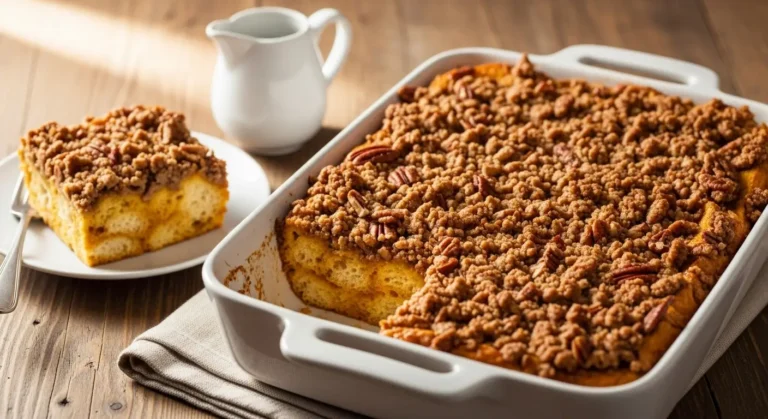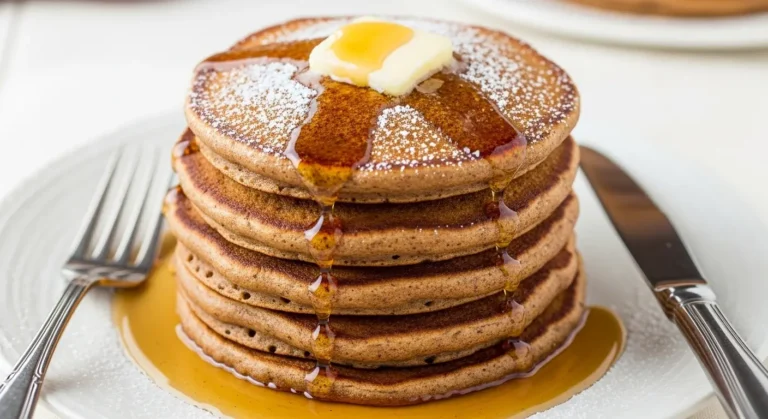Ultimate Brioche French Toast Recipe for Sweet Mornings
Have you ever wondered why restaurant-quality brioche French toast consistently outshines the homemade versions most people create? The secret lies not in specialized equipment or chef training, but in specific techniques and ingredient choices that transform this breakfast classic from ordinary to extraordinary. This brioche French toast recipe elevates the humble breakfast staple into a culinary experience worthy of weekend celebrations and special occasions. Using rich, buttery brioche bread as the foundation, this ultimate brioche French toast recipe balances sweet custard-like interior with a perfectly caramelized exterior. Mastering this hot breakfast recipe will revolutionize your morning routine and make you the go-to breakfast chef among family and friends.
Table of Contents
Ingredients List
For this exceptional brioche French toast recipe, gather these premium ingredients that work harmoniously to create the perfect texture and flavor profile. Our brioche French toast recipe relies on quality ingredients that elevate it beyond ordinary breakfast fare:
For the French Toast Base:
- 8 slices brioche bread (1-inch thick slices)
- 4 large eggs
- 1 cup whole milk
- 1/4 cup heavy cream
- 3 tablespoons granulated sugar
- 2 teaspoons pure vanilla extract
- 1 teaspoon ground cinnamon
- 1/4 teaspoon ground nutmeg
- 1/4 teaspoon salt
- 3 tablespoons unsalted butter (for cooking)
- 2 tablespoons neutral oil like canola or vegetable (for cooking)
For Classic Toppings:
- Pure maple syrup
- Fresh berries
- Powdered sugar for dusting
- Whipped cream (optional)
Possible Substitutions:
- Brioche bread: Challah or thick-sliced French bread can work in a pinch
- Whole milk: Any milk variety works, though richness decreases with lower fat content
- Heavy cream: Half-and-half or additional whole milk
- Granulated sugar: Brown sugar for a deeper molasses flavor
- Pure vanilla extract: Vanilla bean paste for enhanced vanilla flavor
- Cinnamon/nutmeg: Pumpkin pie spice for a seasonal variation
Timing
This brioche French toast recipe requires:
- Preparation time: 10 minutes
- Resting time: 15 minutes (optimal for bread absorption)
- Cooking time: 15 minutes
- Total time: 40 minutes
The active cooking time of this brioche French toast recipe is just 15 minutes.
Step-by-Step Instructions for the Perfect Brioche French Toast Recipe
Step 1: Prepare Your Ingredients
Slice brioche bread into 1-inch thick pieces if not pre-sliced, and allow to sit out for 30 minutes if time permits. Slightly stale brioche actually works better for this brioche French toast recipe as it absorbs the custard mixture without becoming soggy. If using fresh brioche, you can expedite this process by placing slices in a 200°F oven for 10 minutes to dry slightly.
Step 2: Create the Custard Mixture
In a large, shallow bowl, whisk together eggs until fully beaten. Add milk, heavy cream, sugar, vanilla extract, cinnamon, nutmeg, and salt. Whisk vigorously until the mixture is completely homogeneous with no visible egg streaks. The thorough incorporation of ingredients ensures even flavor distribution and proper caramelization during cooking.
Step 3: Soak the Brioche
Place each slice of brioche into the custard mixture, allowing it to soak for 30 seconds on each side. Use a fork or your fingers to gently press the bread down, helping it absorb the mixture evenly. Transfer soaked slices to a baking sheet or plate. For optimal texture, allow the soaked bread to rest for 5-10 minutes before cooking, which allows the custard to penetrate fully to the center.
Step 4: Preheat Your Cooking Surface
Heat a large skillet or griddle over medium heat. Add 1 tablespoon of butter and 1 tablespoon of oil. The combination of butter and oil prevents burning while still imparting that rich butter flavor. Your pan is ready when a drop of water sizzles immediately on contact.
Step 5: Cook to Golden Perfection
Place 2-3 slices of soaked brioche onto the heated surface, being careful not to overcrowd the pan. Cook for 3-4 minutes on the first side until golden brown. Flip only once using a thin spatula, then cook for an additional 2-3 minutes on the second side. The ideal French toast has a uniform golden-brown color with no burnt spots.
Step 6: Maintain Temperature
Transfer cooked slices to a baking sheet in a 200°F oven to keep warm while cooking remaining batches. Add remaining butter and oil as needed between batches. Keeping the first pieces warm ensures everyone can enjoy hot French toast simultaneously.
Step 7: Prepare For Serving
Just before serving, dust the brioche French toast lightly with powdered sugar using a fine-mesh sieve. Arrange on warmed plates with your choice of toppings nearby so everyone can customize their serving. For restaurant-quality presentation, place fresh berries in a decorative pattern and drizzle maple syrup in an artistic design rather than flooding the plate.
Step 8: Serve Immediately
French toast is at its peak quality immediately after cooking, when the contrast between crisp exterior and custardy interior is most pronounced. Serve promptly with warmed maple syrup and fresh accompaniments for the ultimate brioche French toast experience.
Nutritional Information
This brioche French toast recipe yields 4 servings (2 slices per serving) with the following nutritional values per serving:
- Calories: 470
- Total Fat: 28g
- Saturated Fat: 16g
- Cholesterol: 275mg
- Sodium: 380mg
- Total Carbohydrates: 42g
- Dietary Fiber: 1g
- Sugars: 18g
- Protein: 13g
Healthier Alternatives for the Brioche French Toast Recipe
Transform this indulgent brioche French toast recipe into a more nutritious option with these mindful modifications.
- Bread Selection: Substitute whole grain brioche or whole wheat challah for increased fiber content
- Egg Whites: Use 2 whole eggs plus 4 egg whites instead of 4 whole eggs to reduce cholesterol
- Milk Alternative: Replace whole milk with unsweetened almond milk or oat milk for fewer calories
- Sugar Reduction: Decrease sugar to 1 tablespoon and enhance sweetness with a teaspoon of cinnamon
- Yogurt Incorporation: Replace heavy cream with Greek yogurt for added protein and probiotics
- Fruit Integration: Add mashed banana to the custard mixture for natural sweetness and added nutrients
- Cooking Method: Use a non-stick cooking spray instead of butter and oil to significantly reduce fat content
- Topping Swaps: Serve with fresh fruit compote instead of maple syrup to reduce added sugars
These modifications maintain the essence of brioche French toast recipe while creating a more balanced nutritional profile suitable for everyday enjoyment.
Serving Suggestions
Elevate your brioche French toast experience with these creative serving ideas:
- Create a French toast bar with various toppings including fresh berries, sliced bananas, toasted nuts, and different flavored syrups
- Serve with a side of vanilla bean yogurt drizzled with honey for a tangy contrast to the sweet toast
- Pair with savory elements like crispy bacon or breakfast sausage to balance the sweetness
- Layer thin slices of apple or pear between two pieces of French toast for a fruit-filled sandwich
- Add a scoop of mascarpone cheese with lemon zest and a drizzle of honey for an Italian-inspired variation
- Create a seasonal fruit compote using whatever is freshest at your market
- Serve with a side of citrus segments for a refreshing acidic counterpoint
- For special occasions, offer small glasses of champagne or mimosas alongside for a celebratory brunch
Common Mistakes to Avoid
Even experienced cooks can encounter challenges with brioche French toast. Here are key pitfalls to avoid:
- Using Fresh, Soft Bread: Over-fresh brioche becomes soggy quickly—slightly stale bread absorbs the custard mixture while maintaining structure
- Skipping the Rest Period: Not allowing the soaked bread to rest means the custard won’t penetrate fully, resulting in a dry center
- Cooking Temperature Too High: Excessive heat burns the exterior before the interior cooks properly—maintain a consistent medium heat
- Overcrowding the Pan: Too many slices in the pan lowers the temperature and creates steaming instead of caramelization
- Flipping Too Early or Too Often: Resist checking too frequently; flip only once when properly browned
- Insufficient Egg-to-Milk Ratio: Too much milk creates soggy toast; too many eggs creates an overly eggy flavor
- Neglecting Seasoning: Vanilla and spices are crucial for depth of flavor—don’t skimp on these ingredients
- Using Cold Ingredients: Cold eggs and milk don’t incorporate as smoothly; room temperature ingredients create a more homogeneous custard
Awareness of these common errors will help you achieve perfect brioche French toast recipe consistently, with the ideal balance of textures and flavors.
Storing Tips for the Recipe
While brioche French toast is best enjoyed fresh, these storage strategies will help maintain quality when necessary:
- Refrigeration: Store cooled leftovers in an airtight container with parchment paper between layers to prevent sticking for up to 2 days
- Freezing Option: Fully cool cooked French toast, then freeze in a single layer on a baking sheet before transferring to a freezer bag with parchment separators—keeps for up to 1 month
- Reheating Methods:
- Toaster: For the crispiest results, reheat refrigerated slices in a toaster on medium setting
- Oven: Reheat at 350°F for 5-8 minutes (refrigerated) or 10-15 minutes (frozen)
- Skillet: Warm 1-2 minutes per side over medium heat with a small amount of butter
- Microwave: Use only as a last resort, 15-20 seconds per slice at 50% power
- Make-Ahead Strategy: Prepare the custard mixture up to 24 hours in advance and store in the refrigerator in an airtight container
- Quality Preservation: For best results, freeze French toast within 2 hours of cooking to maintain optimal texture and flavor
With proper storage and reheating techniques, you can enjoy this brioche French toast recipe even on busy mornings with minimal preparation.
Conclusion
This brioche French toast recipe transforms an ordinary breakfast into a memorable culinary experience through the perfect combination of rich, buttery bread, properly seasoned custard, and careful cooking techniques. Our brioche French toast recipe delivers a breakfast that balances sweet and savory notes with contrasting textures for a truly satisfying morning meal suitable for both everyday enjoyment and special occasions. Once you master this brioche French toast recipe, you’ll never go back to basic breakfast again.
We’d love to hear how your brioche French toast recipe turned out! Leave a comment below sharing your experience, any modifications you tried, or questions you might have. Don’t forget to save this recipe for your next breakfast gathering or weekend treat!
FAQs
Can I prepare brioche French toast the night before?
Yes, you can prepare “overnight” French toast by arranging the soaked brioche in a buttered baking dish, covering it tightly, and refrigerating overnight. In the morning, let it stand at room temperature for 20 minutes before baking at 350°F for about 25-30 minutes until puffed and golden.
Can I make this recipe dairy-free?
Yes, substitute the whole milk and heavy cream with full-fat coconut milk or a rich plant-based milk like cashew or oat milk. Use a plant-based butter alternative for cooking. These substitutions will maintain the richness while accommodating dairy restrictions.
How do I know when the French toast is perfectly cooked?
Perfectly cooked brioche French toast should have a golden-brown exterior with slight crispness, while the center should be moist but not wet or soggy. When you press gently in the center with a spatula, no liquid custard should seep out, and the toast should feel set throughout.
Can I use frozen brioche for this recipe?
Yes, but thaw the brioche completely and then dry it out slightly by leaving it uncovered for 30 minutes or placing in a 200°F oven for 10 minutes before soaking in the custard mixture. This extra step ensures the bread absorbs the custard properly without becoming overly soggy.
Your Feedback Matters
There are no reviews yet. Be the first one to write one.








4 Comments
Comments are closed.